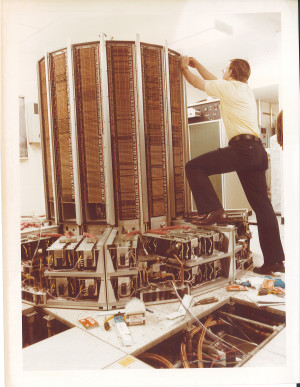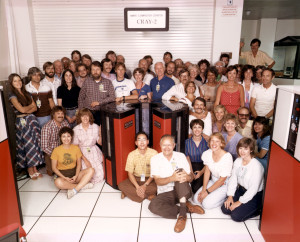Special Feature: Throwback Thursdays Celebrate Scientific Supercomputing
History and factoids to celebrate scientific supercomputing at DOE
September 5, 2013
The U.S. Department of Energy (DOE) was investing in scientific supercomputing long before the internet became the internet, and back when clouds only came in the white, fluffy variety.
As part of the DOE's celebration of scientific supercomputing, we present a sampling of historical photos and factoids shared each of the five Thursdays of this month via social media channels. To see a full resolution image, select any picture. Scroll through all the enlarged images using the right and left arrows that appear at the bottom of the photos.
Did you know? A Cray-1 supercomputer at the Magnetic Fusion Energy Computer Center (now known as NERSC) was featured in Disney’s 1982 “Tron” movie?
This Cray-1 system performed about 138 million calculations per second (138 megaflops). The current flagship system at the center, now called NERSC, is a Cray XE6 named for computer scientist Grace Hopper. It performs more than a quadrillion calculations per second. That’s a billion times faster than the Cray-1!
Did you know? In 1985, the world’s fastest supercomputer was a Cray-2. Today, an iPad2 has as much computing power as the Cray-2 system.
In 1985, the Magnetic Fusion Energy Computer Center (now known as NERSC) staff pose with the world’s first Cray-2 system—it was the center’s flagship system. This computer contained 4 vector processors and had a peak performance of about 1.9 billion calculations per second (1.9 gigaflops).
Did You Know? Since NERSC moved to Berkeley Lab in 1996, the Department of Energy’s primary scientific computing facility has named all of its supercomputers after scientists.
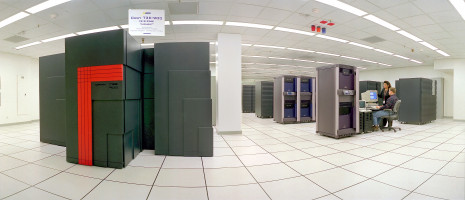
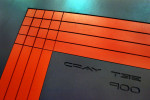 This Cray T3E 900 was the first in a long line of scientific supercomputers named in honor of (who else?) scientists. With 512 processors, it was the U.S.'s largest supercomputer for unclassified research in 1997.
This Cray T3E 900 was the first in a long line of scientific supercomputers named in honor of (who else?) scientists. With 512 processors, it was the U.S.'s largest supercomputer for unclassified research in 1997.
The naming tradition kicked-off in the late 1990s with NERSC’s flagship Cray T3E system—called MCurie in honor of Marie Curie, the French-Polish physicist and chemist known for her pioneering research on radioactivity. In November 1997, MCurie was the fifth most powerful supercomputer in the world. The system had 512 processors and a theoretical peak speed of 461 billion calculations per second (461 Gigaflops). At the time, it was the nation's biggest supercomputer for unclassified research.
Did you know? NERSC’s Seaborg supercomputer—an IBM RS/6000 SP—retired in 2007, after 9 years of 24/7 service.
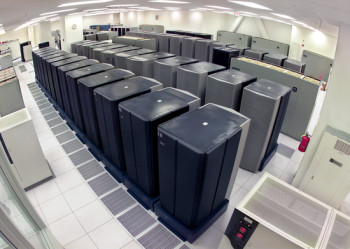
In the late 1990s, supercomputers, like this IBM RS/600 SP, grew dramatically larger as they were designed around commodity processors and standard cabinets.
In 1999, the Department of Energy's National Energy Research Scientific Computing Center began installing an IBM RS/6000 SP supercomputer—called Seaborg, in honor of Berkeley Lab Nobel Laureate Glenn Seaborg. Over the years, the system expanded to 6,656 processors. It performed about 10 trillion calculations per second (10 teraflops) at its peak. And by June 2003, Seaborg was the fourth fastest supercomputer in the world.
Did you know? NERSC’s Hopper supercomputer contains 153,216 compute cores, 217 terabytes of memory, 2 petabytes of disk storage—and a cat figurine for luck!
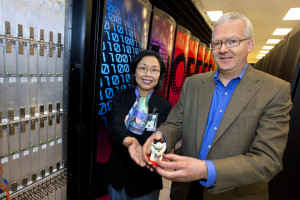
In April 2011, Yukiko Sekine (NERSC's former Energy Department program manager) presents Jonathan Carter (Deputy of Berkeley Lab Computing Sciences) with a Japanese "lucky cat" to place inside a cabinet of Hopper.
Hopper, named in honor of computer scientist Grace Murray Hopper, has a "lucky cat" figurine stashed in one cabinet. It's not the first lucky token to stand guard over NERSC's large, complex and well-used scientific supercomputers. Other systems, for reasons known only to NERSC staff, have been protected from ill fate by rubber chickens.
About Computing Sciences at Berkeley Lab
High performance computing plays a critical role in scientific discovery. Researchers increasingly rely on advances in computer science, mathematics, computational science, data science, and large-scale computing and networking to increase our understanding of ourselves, our planet, and our universe. Berkeley Lab’s Computing Sciences Area researches, develops, and deploys new foundations, tools, and technologies to meet these needs and to advance research across a broad range of scientific disciplines.







 Instagram
Instagram YouTube
YouTube